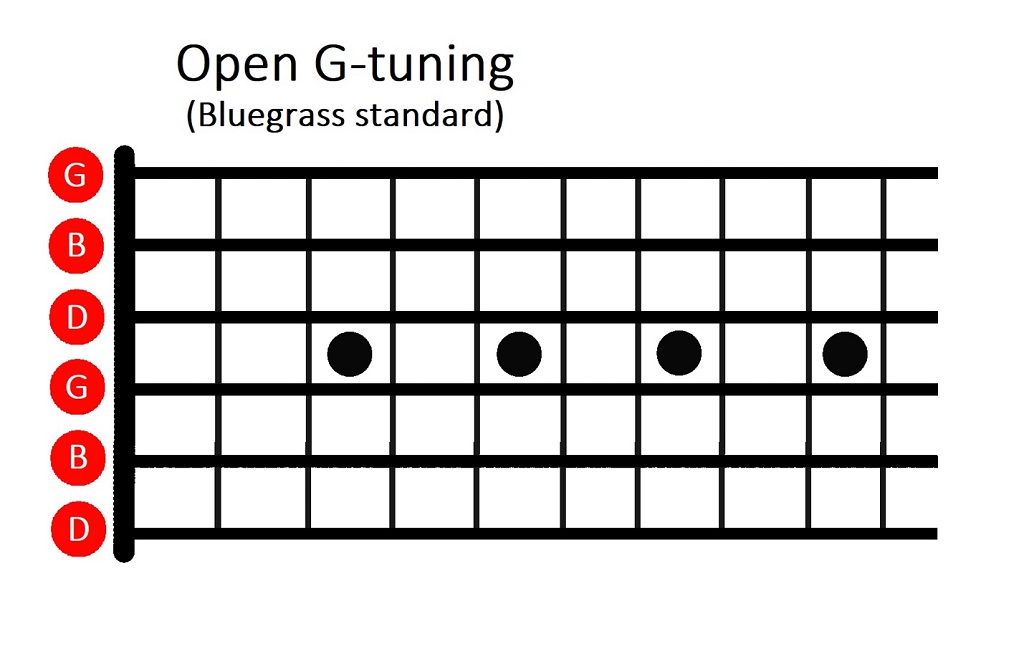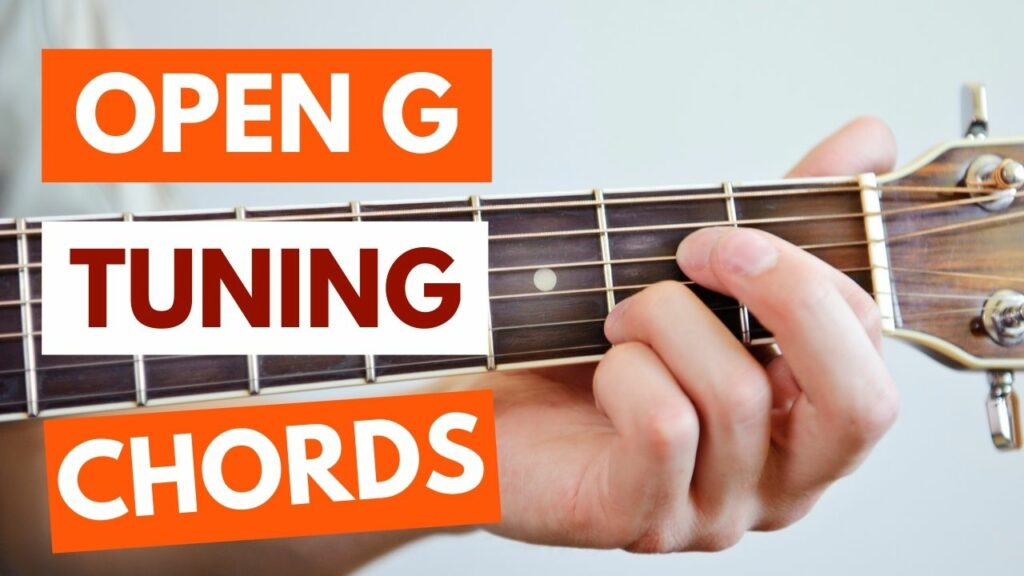Open G Tuning offers guitarists the ability to produce a G chord effortlessly, without fretting any strings. Although alternate tunings might appear daunting, adjusting a few pegs on your guitar can unveil a plethora of new sounds for players.
In this tutorial, we’ll guide you through tuning your guitar to open G, a tuning widely embraced in blues and folk music. Additionally, we’ll explore some familiar songs that leverage open G tuning.
What chords are used in open G tuning?

Here are some common open G tuning chords:
- G major chord (G-D-G-B-D):
- G: 0-0-0-0-0-3
- C: 0-0-0-0-0-0
- D: 0-0-0-0-0-5
- Em: 0-0-0-0-0-7
- Am: 0-0-0-0-0-10
- G7 chord(G-D-G-B-D-F):
- G7: 0-0-0-0-0-3
- C7: 0-0-0-0-0-0
- D7: 0-0-0-0-0-5
- G major 7 chord(G-D-G-B-D-F#):
- Gmaj7: 0-0-0-0-0-2
- Cmaj7: 0-0-0-0-0-0
- Dmaj7: 0-0-0-0-0-4
- G minor chord(G-D-G-Bb-D):
- Gm: 0-0-0-0-0-2
- Cm: 0-0-0-0-0-3
- Dm: 0-0-0-0-0-5
- G minor 7 chord(G-D-G-Bb-D-F):
- Gm7: 0-0-0-0-0-1
- Cm7: 0-0-0-0-0-3
- Dm7: 0-0-0-0-0-5
These chords should help you get started in open G tuning. Remember, in open G tuning, the strings from low to high are tuned to D-G-D-G-B-D.
Understanding Open G Tuning: Exploring an Alternate Guitar Tuning
Open G tuning is a versatile alternate tuning method that enables guitarists to effortlessly produce a G major chord without fretting any strings or using a capo. Named after the open G chord, this tuning requires aligning the strings to the notes constituting a G chord: G, B, and D.
With open G tuning, striking the strings in an open position instantly produces a G chord, eliminating the need for intricate fretting.

The allure of open G tuning lies in its facilitation of playing certain chords with ease. For instance, the G chord can be played openly, while most other major chords are attainable through straightforward barre fingerings. This tuning is particularly advantageous for slide guitar enthusiasts.
Moreover, open G tuning imbues a distinct, bluesy tone distinct from standard tuning. Its versatility has led it to become a staple in various genres, notably blues and folk music. Blues icon Robert Johnson and folk pioneer Joni Mitchell are among its notable proponents. Its influence extends to blues-infused rock, with legendary bands like The Rolling Stones, George Thorogood, and The Black Crowes incorporating open G tuning into their repertoire.
Open G Tuning: A Step-by-Step Guide to Tuning Your Guitar
To transition to open G tuning on the guitar and play a basic I-IV-V chord progression, follow these steps:
- Exploring the DGDGBD Tuning Transitioning from Standard to Open G Tuning:
- Lower both E strings down to D.
- Lower the fifth string from A to G.
- Keep strings two, three, and four tuned the same as in standard tuning (EADGBE).
- Form the open G chord:
- Strum all strings without fretting any notes.
- Locate the IV (C) and V (D) chords:
- Barre the fifth fret to play the IV chord (C), and strum all strings.
- Barre the seventh fret to play the V chord (D), and strum all strings.
Remember, the familiarity with chord shapes and scale patterns in standard tuning on strings two, three, and four still applies in open G tuning. This allows for an easy transition and exploration of new chord progressions.

After playing the basic I-IV-V chord progression in open G tuning for a while, you might want to explore different voicings for these chords. Near the nut of the guitar, you’ll discover some interesting chord shapes.
- Powerful C Chord (Example 2a):
- Position your fingers on the fingerboard as if you were playing a regular C-chord shape in standard tuning.
- This yields a powerful chord with the flatted third of the G scale (the seventh of C7) in the bass, adding depth to the chord.
- D7 Chord (Example 2b):
- This chord isn’t as intense as the C chord described above.
- The seventh on the second string blends into the chord more smoothly, while the D notes on the top and bottom strings create a ringing, droney sound.
These variations provide new sonic textures to your chord progressions in open G tuning, adding richness and complexity.
Exploring Songs to Play in Open G Tuning
In open G tuning, the possibilities are vast. While you can play anything you desire in this tuning, certain genres excel within its framework. Notably, the blues thrives in open G. Renowned blues icon Robert Johnson extensively employed open G tuning in numerous tracks, employing both slide and fingerstyle techniques. “Walkin’ Blues” stands as a prime illustration of why open G is a natural fit for blues music.
Open G tuning isn’t just for blues—it’s a powerhouse for rock music too. Few exemplify this better than the Rolling Stones. Keith Richards, with his five-string Telecaster tuned to open G, has crafted numerous rock classics like “Brown Sugar,” “Wild Horses,” and “Jumpin’ Jack Flash.” Just give the iconic “Honky Tonk Women” a listen, and you’ll grasp the essence of open G rock music.
While open G tuning is celebrated in blues and rock, it’s also a delightful option for folk music and singer-songwriters. Joni Mitchell, renowned for her innovative use of alternate tunings, also embraced more conventional alternates like open G. Her song “The Circle Game” beautifully showcases the softer, more melodic side of open G tuning.
Let’s strum away!
Open G tuning is an excellent choice for blues, rock, or folk music enthusiasts. It simplifies major chords and offers opportunities for engaging hammer-ons and pull-offs. Grab your guitar, string it with some Aguitarblog strings, tune to open G, and let the fun begin!

